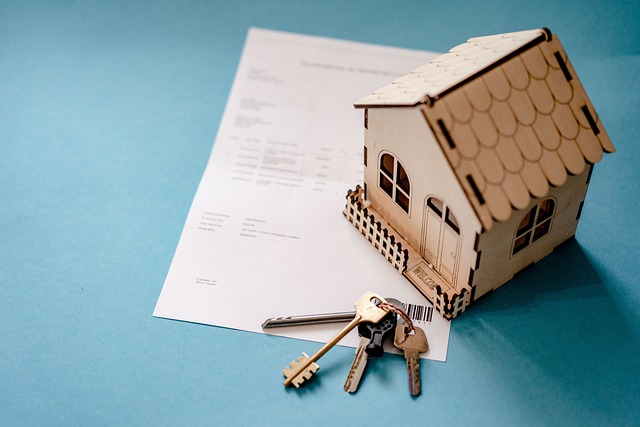Understanding Home Value: Practical Property Guide
Learn how professionals determine a home's worth and how you can estimate it yourself. This guide covers appraisals, the three main valuation methods, factors that move prices, DIY valuation tips, and cost ranges for common services and upgrades to help you make smarter real estate decisions.

Understanding Home Value: Practical Property Guide
Knowing a property’s true worth is essential whether you’re selling, buying, refinancing, or investing. Home value influences mortgage approvals, tax assessments, renovation choices, and expected returns. This guide explains how licensed professionals arrive at valuations, outlines the core appraisal methods, shows how to approximate value yourself, and offers practical steps to enhance market appeal and protect equity.
How professional valuations are conducted
A formal valuation is generally performed by a licensed appraiser who uses an objective, documented approach. The process normally begins with a physical inspection to record the home’s condition, layout, square footage, and notable upgrades. Appraisers catalog structural elements, finish quality, and any deferred maintenance that could affect value.
After the site visit they analyze recent market activity—sales, listings, and neighborhood trends—to ground their conclusions in current data. The final deliverable is a detailed report that explains how the appraiser reached a conclusion of value using recognized appraisal standards and supporting comparables or calculations.
Primary approaches to valuing real estate
Professionals rely on three principal approaches, choosing the one that best fits the property type and purpose of the valuation:
-
Sales comparison approach: By far the most common for single-family homes, this method benchmarks the subject property against recently sold, similar homes nearby. Adjustments account for differences in size, age, condition, and features. Because it reflects actual market transactions, it’s usually the most reliable measure of current market value.
-
Cost approach: This technique estimates value as the sum of the land plus the cost to reproduce or replace the structure, minus depreciation. It’s especially useful for new construction, specialty properties, or when comparable sales are limited.
-
Income approach: Used primarily for rental properties and investments, this method converts expected net income (rent minus expenses) into a present value using capitalization rates or discounted cash flow models. If a property’s value is driven by its income potential, this approach is the appropriate choice.
How to estimate your home’s value on your own
Homeowners can develop a reasonable ballpark figure without hiring an appraiser. Automated valuation models (AVMs) and online tools pull public records, recent sales, and algorithms to produce quick estimates. They’re convenient but imperfect—AVMs can overlook recent renovations, unique floor plans, or hidden defects.
A more hands-on approach is to compile a set of comparable recent sales in your neighborhood and adjust them for differences in square footage, age, condition, and amenities. Track local market indicators such as days on market, inventory levels, and mortgage rate trends to refine your estimate. For major transactions—selling, refinancing, or securing a loan—a licensed appraisal or broker price opinion offers greater accuracy and legal standing.
| Service / Upgrade | Typical Cost Range |
|---|---|
| Professional appraisal (single-family) | $300 – $700 |
| Home inspection | $300 – $500 |
| Minor kitchen remodel | $10,000 – $25,000 |
| Bathroom remodel | $5,000 – $20,000 |
| Energy-efficiency upgrades (windows, insulation) | $2,000 – $15,000 |
Cost disclaimer: Prices are estimates and will vary by location, contractor, and scope. This table is for illustrative purposes only.
Why home values fluctuate
Home prices change for many reasons. Macro factors—interest rates, employment levels, and overall economic confidence—influence demand across wide areas. Local developments such as new schools, transit projects, zoning shifts, or commercial construction can alter neighborhood desirability and pricing independently of the national market.
Supply-side forces matter too: an influx of new construction or a surge of listings can depress prices, while tight inventory often drives prices up. Short-term swings can be caused by seasonal trends and buyer sentiment; long-term appreciation is usually tied to demographics, job growth, and local infrastructure.
Monitoring both broad economic indicators and neighborhood-specific signals will give you a clearer picture of where values are heading.
Practical improvements that tend to raise value
Smart, targeted improvements typically deliver the best returns. Consider the following strategies:
-
Focused renovations: Kitchens and bathrooms generally offer strong ROI. You don’t always need a full gut—new surfaces, modern fixtures, and updated appliances can refresh the space for far less.
-
Energy and efficiency upgrades: Better insulation, efficient HVAC systems, and modern windows reduce utility costs and appeal to buyers who value lower operating expenses.
-
Routine maintenance: Addressing roof issues, fixing plumbing or electrical problems, and keeping the exterior well-maintained preserves value and prevents more costly deterioration.
-
Improve curb appeal: Clean landscaping, fresh exterior paint, and a welcoming entryway create a positive first impression that can influence buyers and appraisers.
-
Know your market ceiling: Avoid over-improving beyond comparable homes in the neighborhood. Renovation investments should reflect local expectations so they can be recouped at sale.
Final thoughts
Valuing a home blends objective data with local market knowledge. Online tools and DIY estimates are useful for quick checks, but they do not substitute for a licensed appraisal when precision is needed. Sellers benefit from knowing realistic value to set competitive asking prices; buyers and investors use valuation insights to craft offers and assess risk. Periodically reassessing your property’s worth and pursuing well-chosen improvements helps protect equity and maximize future returns. When in doubt, consult a real estate professional or certified appraiser to guide major financial decisions.






